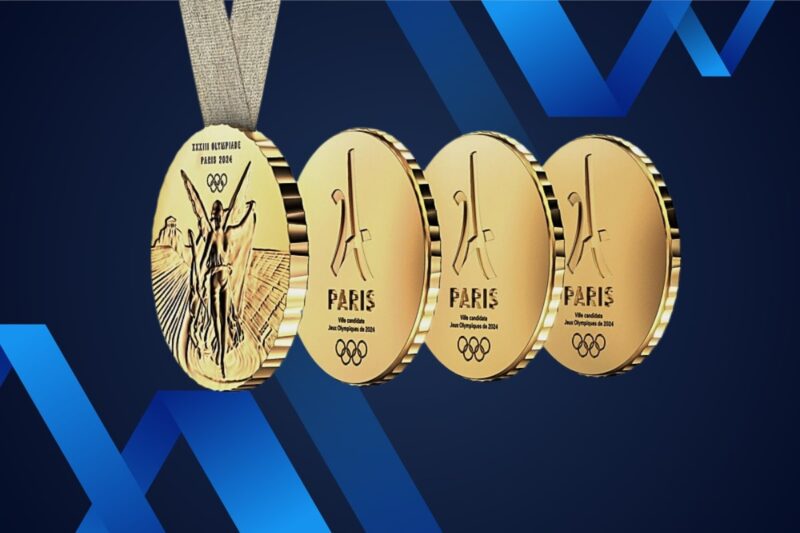The Olympic Games are a global spectacle, drawing attention from every corner of the world. While athletes train for years to compete for the honor of their countries, many spectators are intrigued by the medals themselves.
One question that often arises is: “How much gold is actually in an Olympic gold medal?
Development Over Time
The Olympic medals have a rich history that dates back to ancient Greece. Over the years, their design and composition have evolved, reflecting the changing times and values of the Olympic movement.
Ancient Origins
In ancient Greece, Olympic champions were crowned with olive wreaths. These wreaths symbolized victory and were a mark of honor. The tradition of awarding with these items began much later, with the modern Olympic Games.
- Olive Wreaths: Symbol of peace and victory.
- No Medals: Athletes were recognized for their prowess, not material rewards.
- Prestige: Winning was about honor and recognition, rather than tangible prizes.
Evolution in the Modern Era
With the revival of the Olympic Games in the late 19th century, trophies became the standard award for victors. Initially, those items for winners were made entirely of gold. However, due to cost constraints and other factors, their composition changed over time.
- Pure Gold: The early modern Olympic ones were solid gold.
- Changing Times: Economic factors led to a shift in the composition.
- Symbolism Over Substance: The value became more symbolic than material.
Composition
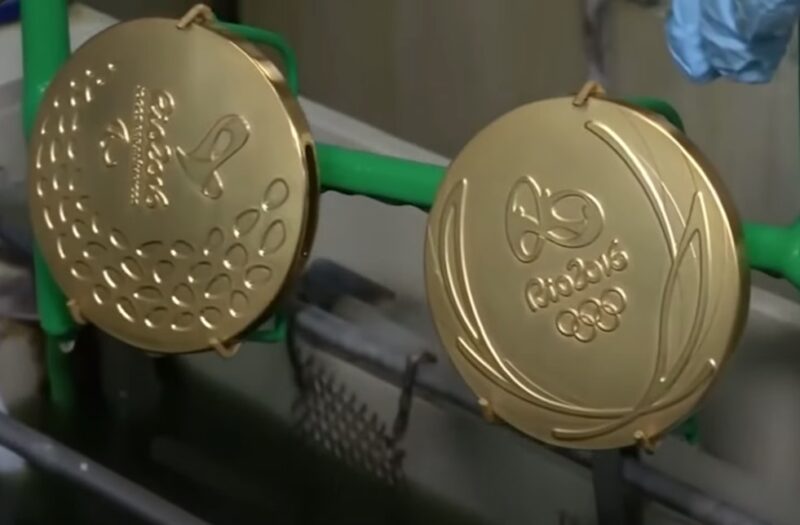
Today’s Olympic gold is not made entirely of gold. They have specific requirements set by the International Olympic Committee (IOC) regarding their composition and design.
Materials
According to the IOC, an Olympic trophy must be made up of at least 92.5% silver. The remaining 7.5% is made up of gold, with a minimum of 6 grams of gold used in each item.
- Silver Core: The majority is silver.
- Gold Coating: A thin layer of gold gives the characteristic appearance.
- Weight and Size: There is a minimum weight of 60 grams and a diameter of at least 60mm.
Symbolic Value vs. Material Value
While the material value of an Olympic gold might not be as high as one might assume, its symbolic value is immeasurable. For athletes, it represents years of hard work, dedication, and sacrifice.
- Achievement: It represents a testament to an athlete’s skill and perseverance.
- Legacy: Winning it cements an athlete’s place in history.
- Pride: Representing one’s country and bringing home a medal is a matter of immense pride.
Real Value
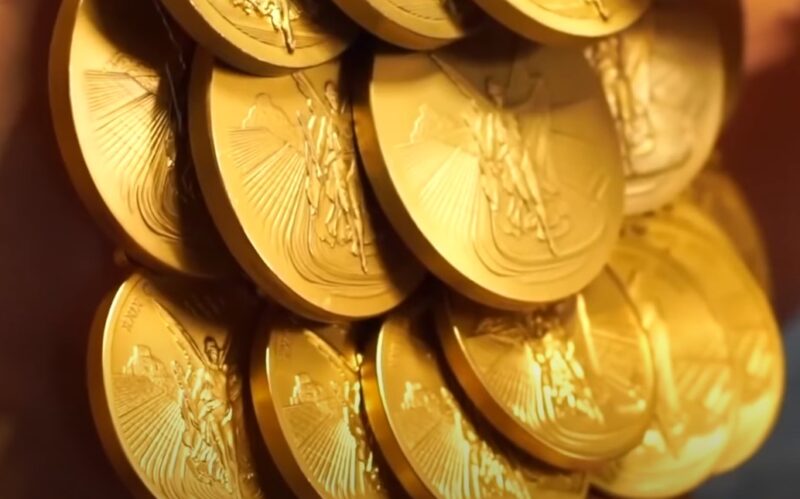
The value of an Olympic gold medal goes beyond its material composition. It’s a symbol of excellence, representing the pinnacle of athletic achievement.
Monetary Value
Based on the current market prices for gold and silver, the material value of an Olympic gold medal is estimated to be around $800 to $1,200.
However, in auctions, these medals can fetch much higher prices, depending on the athlete and the significance of the win.
- Market Rates: The value fluctuates based on gold and silver prices.
- Auction Prices: Medals from iconic moments or famous athletes can sell for millions.
- Intrinsic Value: For many, the sentimental value of the medal is priceless.
Beyond the Podium
For athletes, the journey to winning a gold medal is filled with challenges, sacrifices, and countless hours of training. The medal is a symbol of their dedication, passion, and the support of their loved ones and fans.
- Personal Journey: Every medal has a story of struggle and triumph behind it.
- Inspiration: Gold medalists inspire future generations to pursue their dreams.
- Global Recognition: Winning an Olympic medal brings global fame and recognition.
Who Determines the Design?
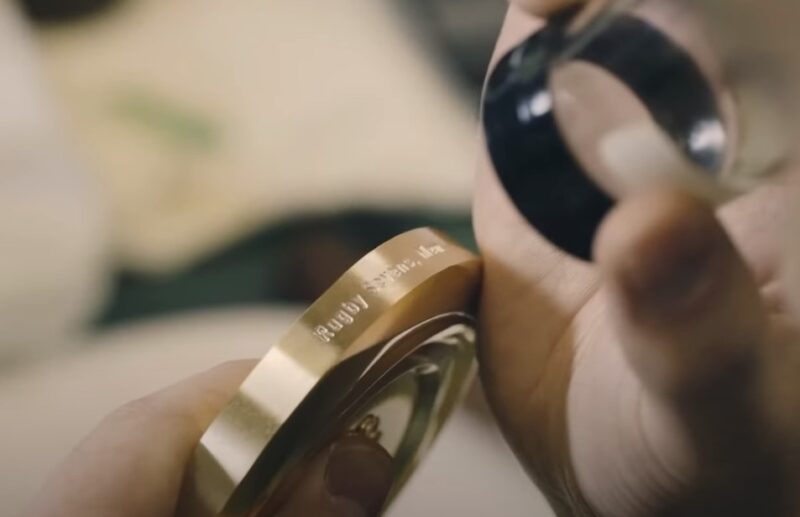
Every Olympic Games has its unique medal design, reflecting the culture, history, and values of the host country. The process of creating these medals is a blend of artistry and precision, ensuring that each piece is a work of art in its own right.
Also, there are some rules that has to be followed. The organization of the Olympics is quite strict as it is its interval. Therefore, the host must follow some standards.
Design Inspirations
The host country often incorporates elements of its heritage, landmarks, and symbols into the medal design. This makes each Olympic medal distinct and a cherished keepsake for the winners.
- Cultural Motifs: From ancient patterns to modern art, the designs often draw from the country’s rich tapestry of history.
- Landmarks: Iconic structures or natural wonders of the host nation might be featured.
- Olympic Spirit: Elements that embody the spirit of the Games, such as the Olympic rings or the torch, are often included.
The Making Process
Crafting is a meticulous process that involves several stages. From initial sketches to the final product, a team of artists, designers, and craftsmen work in harmony to produce the medals.
- Sketching: Initial designs are drawn up and refined.
- Material Sourcing: High-quality silver and gold are sourced to create the medals.
- Minting: Using state-of-the-art techniques, the medals are minted to perfection.
Environmental and Ethical Considerations
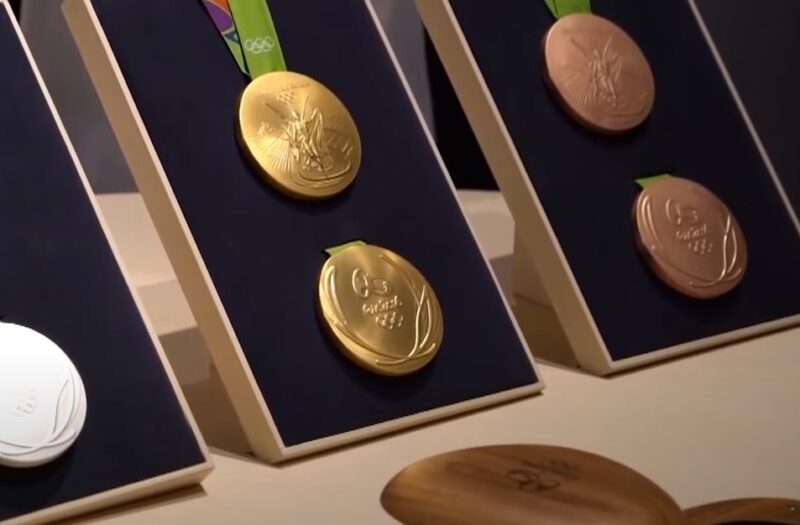
In recent years, there has been a growing emphasis on ensuring that the materials used in Olympic medals are sourced responsibly. The Olympic movement recognizes the importance of sustainability and ethical practices.
Sustainable Sourcing
The IOC encourages host cities to source materials for the medals from sustainable and ethical sources. This includes using recycled materials or ensuring that mining practices are environmentally friendly.
- Recycled Materials: Some recent Olympic Games have used recycled metals from electronic waste.
- Eco-friendly Practices: Efforts are made to reduce the carbon footprint during the medal-making process.
- Fair Trade: Ensuring that miners and workers involved in sourcing the materials are paid fairly and work in safe conditions.
Legacy and Impact
Beyond the Games, the emphasis on sustainability and ethical sourcing serves as a model for other industries. The Olympic movement aims to leave a positive legacy, not just in sports but also in promoting responsible practices.
- Setting a Standard: The Olympics sets a benchmark for other global events.
- Educating the Masses: By highlighting sustainable practices, the Olympics educates viewers worldwide about the importance of ethical sourcing.
- Long-term Impact: The hope is that such initiatives will inspire more industries to adopt sustainable practices.
Impact of New Technologies
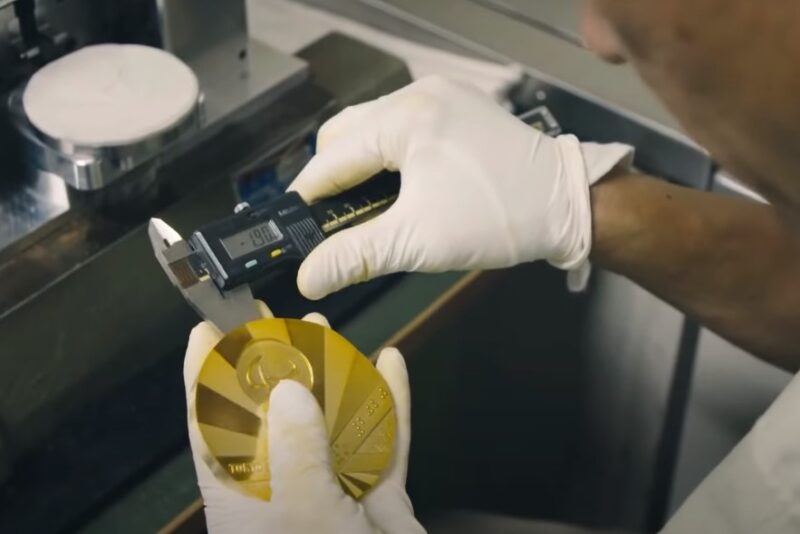
As the world evolves, so does the Olympic movement. The future of Olympic gold medals may see even more changes, both in design and composition, reflecting the times and values of future generations.
Technological Advancements
With advancements in technology, future medals might incorporate innovative materials or designs that we can’t even imagine today.
- Interactive Medals: Future medals might have interactive elements, like digital displays or connectivity features.
- Sustainable Innovations: As technology advances, even more sustainable methods of producing medals might emerge.
- Personalized Elements: Athletes might receive medals with personalized features, making each award even more unique.
Embracing Global Changes
The Olympics have always been a reflection of global trends and changes. As the world grapples with issues like climate change, equality, and technological advancements, future medals will undoubtedly echo these themes.
- Climate Awareness: Medals might be designed to highlight the importance of combating climate change.
- Celebrating Diversity: Designs might focus on celebrating global unity and the beauty of diversity.
- Digital Integration: The digital age might see medals integrated with global networks, connecting winners with fans in real-time.
FAQs
Why aren’t Olympic gold medals made entirely of gold anymore?
The primary reasons are the high cost of gold and the sheer number of medals required for the Olympics. Making medals entirely of gold would be prohibitively expensive. Over time, the composition shifted to a more cost-effective blend, with the medal primarily made of silver and coated with gold.
How often does the design of the Olympic medals change?
The design of the Olympic medals changes for every Olympic Games. Each host country has the privilege of designing the medals, allowing them to infuse elements of their culture, history, and values into the design.
How are the raw materials for the medals sourced?
The host country is responsible for sourcing the raw materials. In recent years, there has been a push towards sustainable and ethical sourcing. This includes using recycled materials, ensuring eco-friendly mining practices, and promoting fair trade.
Are Paralympic medals different from Olympic medals?
Yes, Paralympic medals have their own unique designs, though they often share thematic elements with the Olympic medals of the same year. The host country designs both sets of medals, ensuring that they reflect the spirit and values of each respective event.
Summary
While being a symbol of athletic excellence, it is also a reflection of the times, values, and stories of the people behind them. As we look to the future, it’s exciting to imagine how these trophies will evolve, continuing to inspire and captivate generations to come.
